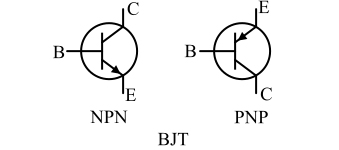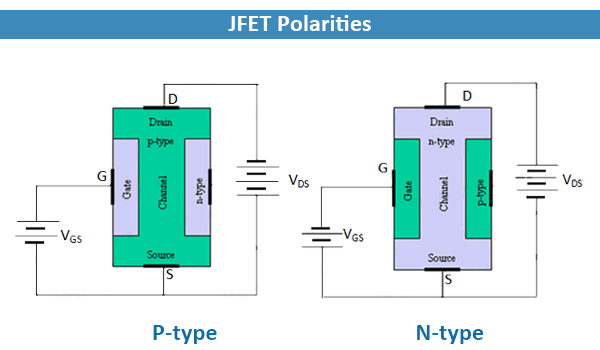Introduction
Delving into the fascinating realm of electronics, we often encounter an array of critical components, the most notable being transistors, specifically Bipolar Junction Transistors (BJTs) and Junction Field-Effect Transistor(JFET). These semiconductor devices are the linchpins of modern electronics, shaping our digital age in more ways than we realize. BJT vs JFET, who is better?This article will compare BJT and JFET in detail
What is Bipolar Junction Transistor (BJT)?
A BJT, consisting of three terminal components (Emitter, Base, and Collector) sets the foundation for most of today's complex electronic systems. The operational principle of a BJT lies in its ability to control the electrical current flow across the Emitter and Collector using the Base. Its impressive current handling capability and low output resistance make it a go-to choice in signal amplification and power regulation applications.

There are two types of BJTs: NPN and PNP, with different polarities. They have three layers of semiconductor material and two pn junctions. The three regions in a BJT are called the emitter (E), base (B) and collector (C).
BJTs are pervasive across multiple sectors due to their robustness and adaptability, ranging from simple radio frequency amplifiers to high-tech artificial intelligence processors.
What is Junction Field-Effect Transistor (JFET)?
A JFET, short for Junction Field-Effect Transistor, is a type of transistor that uses an electric field to control the flow of current. JFET is three-terminal semiconductor devices, with terminals referred to as the source, gate, and drain.
Unlike Bipolar Junction Transistors (BJTs), JFET is voltage-controlled devices, meaning that they regulate current conduction using an applied voltage. They are unipolar devices, which means they involve single-carrier-type operation.

There are two main classifications of JFET (Junction Field Effect Transistor): N-channel JFET and P-channel JFET. The channel of N-channel JFET is made of N-type semiconductor, and the current is mainly flowed by electrons. While the channel of P-channel JFET is made of P-type semiconductor, the current flows mainly by holes.
Due to their high input impedance, JFET are frequently used in amplifier applications where their voltage handling capabilities make them an ideal choice. They are also employed in low-noise applications and in circuits that demand high input impedance.
Compare BJT and JFET
Both BJTs and JFET boast unique operational capabilities. While BJTs are current-controlled devices, JFET are voltage-controlled, marking a fundamental difference in their functioning. Structurally, BJTs utilize both electron and hole charge carriers, whereas JFET only use one type of charge carrier. Below is the table comparing BJT and JFET in detail:
BJT vs JFET| Comparison Criteria | Junction Field-Effect Transistor (JFET) | Bipolar Junction Transistor (BJT) |
|---|
| Operational Principle | Voltage-controlled device, uses an electric field to control current flow | Current-controlled device, uses a small current to control a larger current flow |
| Charge Carriers | Uses only one type of charge carrier (electrons for N-JFET and holes for P-JFET) | Uses both electron and hole charge carriers |
| Input Impedance | High input impedance, reducing power draw from preceding stages | Lower input impedance, potentially leading to more power draw from preceding stages |
| Noise | Lower noise, making JFET more suitable for sensitive signal amplification | Higher noise compared to JFET, but still acceptable for most applications |
| Switching Speed | Lower switching speed, which might limit its use in high-frequency applications | Higher switching speed, making BJTs more suitable for high-frequency applications |
| Gain | Lower gain compared to BJTs, which may limit its use in power amplification | Higher gain, often making BJTs more preferable for power amplification |
| Power Consumption | Generally, JFET consume less power than BJTs, which can be beneficial in power-sensitive applications | BJTs often consume more power compared to JFET, which might be a limiting factor in power-sensitive designs |
| Complexity of Fabrication | More complex and costlier to fabricate, resulting in higher cost | Easier and cheaper to fabricate, leading to lower cost |
| Thermal Stability | JFET is generally more thermally stable than BJTs | BJTs, in contrast, are less thermally stable than JFET |
| Application Fields | Ideal for signal amplification in sensitive instruments due to low noise level | More suitable for applications needing high gain and high-frequency operation |
By comparing BJT and JFET we can know, JFET often outperform BJTs in aspects like input impedance, noise level, and power consumption, making them ideal for certain applications. However, BJTs excel in switching speed and gain, proving their worth in other specific applications. Thus, the choice between JFETs and BJTs largely depends on the particular needs of the application.
Final Evaluation and Conclusion
The decision to choose a BJT or JFET depends on multiple factors, including power requirements, frequency response, cost-effectiveness, and intended application. It's essential to weigh these considerations before making the final selection.
In summary, JFET often outperform BJTs in aspects like input impedance, noise level, and power consumption, making them ideal for certain applications. However, BJTs excel in switching speed and gain, proving their worth in other specific applications. Thus, the choice between JFET and BJTs largely depends on the particular needs of the application.

Nantian Electronics a professional distributor of electronic components, providing a wide range of electronic products, saving you a lot of time, effort and cost through our meticulous order preparation and fast delivery service.
Share this post



FAQ
1.What are the major differences between BJT and FET?
BJT (Bipolar Junction Transistor) and FET (Field-Effect Transistor) differ in their construction, conduction mechanism, control, impedance, voltage gain, noise performance, speed, and power dissipation. BJT is a three-layer device controlled by current, while FET is a three-terminal device controlled by voltage. BJT has lower input impedance, higher output impedance, and higher voltage gain compared to FET. FET has better noise performance, faster response time, and lower power dissipation. The choice depends on application requirements and circuit design considerations.
2.What is the basic difference between BJT and FET and MOSFET?
BJT and FET are two types of transistors with different principles of operation. BJT is a current-controlled device, while FET is a voltage-controlled device. MOSFET is a specific type of FET with a metal-oxide-semiconductor structure.
3.What is the advantage of JFET over BJT?
JFET (junction field-effect transistor) has advantages over BJT (bipolar junction transistor) including high input impedance, voltage-controlled operation, low noise, thermal stability, simplified biasing, and zero input current.
4.What is difference between BJT and JFET?
BJT and JFET have key differences:
- BJT is a current-controlled device, while JFET is a voltage-controlled device.
- BJT has three doped semiconductor layers, forming two pn junctions, whereas JFET has a single doped semiconductor material without any pn junction.
- BJT controls current flow between emitter and collector, while JFET controls current flow between source and drain.
- BJT is available in NPN and PNP types, while JFET is available in N-channel and P-channel types.
The choice between the two depends on specific application requirements and circuit design considerations.